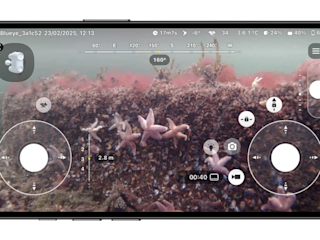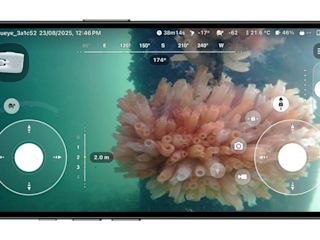Marea: research-driven restoration of the Oslofjord
The ocean covers over 70% of the Earth’s surface and is home to most of the planet’s biological diversity. Research on restoration, such as the restoration of coral reefs, seagrass meadows, and kelp forests, is important and can help rebuild degraded ecosystems and prevent the loss of species.
According to the Norwegian Environment Agency, the Oslofjord today faces a combination of severe environmental pressures:
- Eutrophication from agriculture, sewage, and stormwater causes algal blooms that deplete oxygen
- Plastic and chemical pollution add further stress to marine ecosystems
- Overfishing disrupts ecological balance and reduces fish populations
- Loss of habitats such as kelp forests and seagrass meadows eliminates key nursery areas
- Climate change warms the water and places additional pressure on already vulnerable species


Marea uses underwater ROVs to restore the Oslofjord
Marea was founded by a group of marine biologists, freedivers, and ocean enthusiasts determined to reverse the loss of biodiversity in the Oslofjord. In collaboration with researchers from NIVA (Norwegian Institute for Water Research) and other partners, they use the Blueye X3 ROV to collect scientific data and monitor ongoing restoration efforts.
The Blueye X3 underwater drone has been revolutionary for us. We'll continue using it to document changes over time - but just as importantly, to tell the story of the fjord. By bringing the underwater world to the surface, we can show what's happening beneath the waves. - Cori Ready, Chief Operating Officer, Marea.
With the Blueye ROV, Marea document:
- The development of kelp forests and seagrass meadows
- Water quality and oxygen levels
- Changes in species diversity over time
- The impact of restoration measures, such as kelp planting and mussel habitat establishment
From research to outreach
For centuries, the Oslofjord has provided food, recreation, and livelihoods to people in the region. In recent decades, however, biodiversity has declined dramatically. Many species and habitats, including kelp forests and seagrass meadows, are now threatened.
Protecting and restoring this ecosystem isn't just about saving marine life - it's about preserving a fundamental part of Norway's natural heritage, strengthening our climate resilience, and showing that recovery is possible, even in urban coastal areas. - Cori Ready, Chief Operating Officer, Marea.
A key part of Marea's work is making science accessible to everyone. Because the Blueye X3 ROV is compact and easy to deploy, Marea can bring live underwater footage to public events and community projects. Something previously impossible without large research vessels. This connects research and communication, fostering engagement and awareness within the local community. In this way, Marea acts as a bridge between science, education, and civic engagement, demonstrating how modern ROV technology can advance both knowledge and ocean awareness.


Marea also collaborates with research institutions and local partners through projects such as Green Gravel and Adopt a Habitat, which allows schools, volunteers, and companies to participate in restoration and data collection efforts. Supported by Bymiljøetaten (the Oslo Agency for Urban Environment), Sparebankstiftelsen DNB, Akershus County, Oslo Municipality, and Seaweed Solutions, Marea continues to develop methods that utilize ROV data for restoration research and long-term ecosystem monitoring.
Their goal is clear: a healthy, biodiverse, and resilient Oslofjord that can serve as a model for other fjords and coastal areas.
ROVs as tools in marine research
Today, ROVs are utilized in a wide range of applications, from academic research to environmental monitoring and industrial inspections.
In marine science, ROVs have become indispensable because they:
- Provide researchers with access to deeper and hard-to-reach areas
- Reduce the need for diving, thus improving safety
- Collect images, video, and sensor data in real time
- Make data collection more affordable and accessible
The Blueye X3 ROV stands out by combining professional-grade performance with user-friendliness. The ROV can be equipped with sensors such as the Aqua TROLL 500 to measure temperature, salinity, oxygen levels, and turbidity. This provides critical data for research and monitoring projects.

The future of ROVs in marine research
ROVs, like the Blueye X3, have transformed how we study the ocean. An underwater drone make it possible to:
- Monitor ecosystems in real time
- Collect large amounts of accurate data
- Visually document environmental changes
- Involve more people in the research process
In a time when the ocean is under increasing pressure, technology like the Blueye ROV is not just a research instrument, it is a key to understanding, communicating, and managing life below the surface.
Want to learn how the Blueye underwater drone can support monitoring, restoration, and communication of marine ecosystems? Get in touch here!




